Red Dirt Reset: Answering the clay-court season's biggest questions
By Peter Bodo Apr 07, 2021Roland Garros
Can champion Iga Swiatek bring consistency, too?
By Steve Tignor May 26, 2021Wimbledon
The Tennis Conversation: Tim Henman
By Matt Fitzgerald May 21, 2021Wimbledon
Debating best-of-three sets vs. best-of-five
By Steve Tignor May 21, 2021Polish phenom Iga Swiatek rules in Rome
By Joel Drucker May 16, 2021Flawless Final: Iga Swiatek double bagels Karolina Pliskova in Rome
May 16, 2021Pliskova powers past Martic to reach third consecutive Rome final
By Jordaan Sanford May 15, 2021Iga Swiatek wins twice to reach Rome final, now a win away from Top 10
By John Berkok May 15, 2021Elina Svitolina holds off Garbiñe Muguruza to complete Rome QF line-up
By David Kane May 13, 2021Gauff relishes flawless performance with Barty matchup looming
By Steve Tignor May 13, 2021Red Dirt Reset: Answering the clay-court season's biggest questions
Will Rafael Nadal dominate again? Will Naomi Osaka experience success on a different surface? What will the stretch look and feel like?
Published Apr 07, 2021
Advertising
The red-clay road to Roland Garros was closed to all traffic due to the COVID-19 pandemic last year. Paths to glory in places like Monte Carlo, Madrid, Rome, Stuttgart and Budapest went untrodden. Even the French Open was postponed. Nary a pair of white socks emerged from the hotel dryer in Paris in May, defiantly suffused with a red tint.
It will be different this year. Exactly how different, we don’t really know, because the pandemic has run an unpredictable course that keeps health officials in most places on high alert. But let’s look at some of the juicer questions looming as the European clay stretch gets underway.
Tournaments that don’t have the cushion of a significant broadcast deal—mainly, bottom-tier ATP and WTA 250 events—have suffered. Half-a-dozen events have been canceled or postponed, but a similar number has been quickly sanctioned and added. The most painful loss: the Marrakech event, which was an ATP staple for some 30 years.
The WTA’s recent embrace of the ATP’s three-tier tournament system, in which tournaments are identified by the number of rankings points awarded to the winner (250, 500, 1000), will help clarify the significance of the nine WTA events on the slate. (Ten, including this week's green-clay Volvo Car Open in Charleston.) The ATP has ten tournaments on tap.
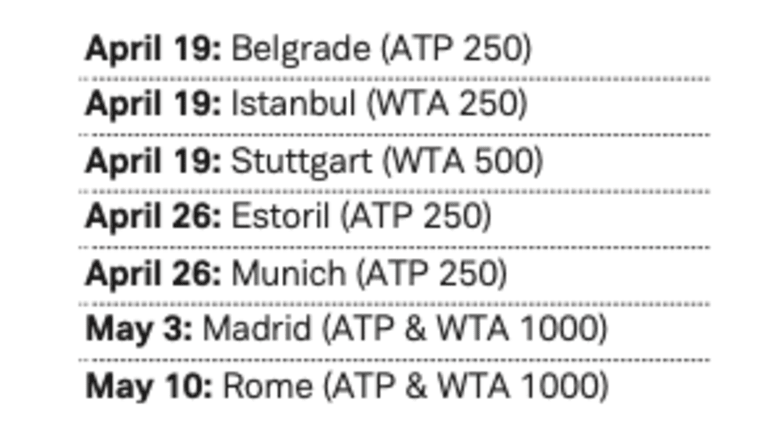
Red Dirt Reset: Answering the clay-court season's biggest questions
Advertising
Well, the “new” normalcy, anyway.
Protocols regulating players and fans haven’t entirely been spelled out, and they will be subject to change right up to the start of play on an event-by-event basis. Players will likely have to live with “bubble” or semi-bubble regulations, limiting their freedom of movement. Their hope to play for spectators is hanging in the balance.
Monte Carlo has already decided against allowing fans. Barcelona has posted a fingers-crossed “wait list” for tickets. Madrid, Rome and Roland Garros are aggressively planning to bring in fans.
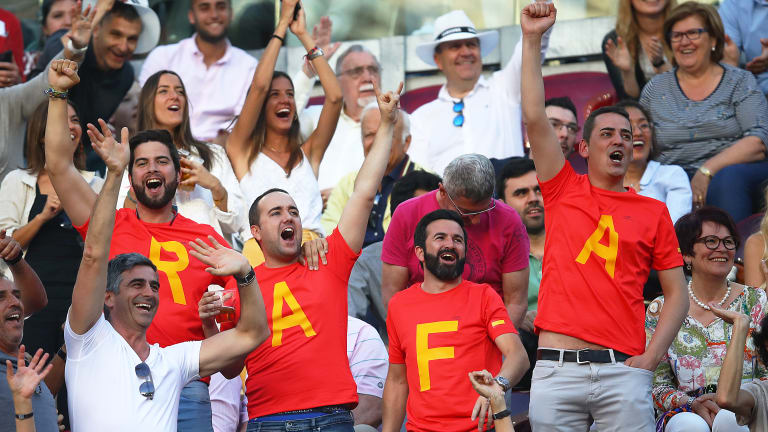
Red Dirt Reset: Answering the clay-court season's biggest questions
© Julian Finney/Getty Images
Advertising
Nadal fans celebrate at the Caja Mágica in Madrid. (Getty Images)
“The Mutua Madrid Open will allow fans to enter the Caja Mágica,” communications manager Rafael Plaza wrote in an email. “Because the situation is changing a lot almost daily, right now it is impossible to give an exact number. The conditions will be studied periodically together with the health authorities until the beginning of the tournament.”
Amelie Oudea-Castera, the French Tennis Federation's (FFT) new chief, has told press that Roland Garros hopes to host the “highest possible number of spectators” and is modeling different attendance scenarios.
The players continue to take a big prize-money hit. The Monte Carlo ATP pot is down by roughly 60 percent, to $2.4 million. The winner will take home $300,000, an $800,000 difference than what the 2019 champion won. Lower-ranked players in Monaco will absorb less of a blow, percentage-wise. First-round losers will bank $14,338, a 37 percent drop from last year’s figure of $21,313.
Many of the other events have yet to announce prize-money figures. Among the 250s, this year's purse in Estoril is $481,270—over a 50 percent drop from 2019. On the WTA side, the prize money in 2019 in Stuttgart was $888,007. This year, it’s $565,530.
In past years, the “King of Clay” has often run the table while on European dirt. Not so in 2019. Nadal did not play a final until he won Rome, as a prelude to the French Open. This year, he has been hampered by a back injury, and recently told Brazilian magazine Veja:
“In the past few years, I have been experiencing pain more often and you need to learn to live with it, as long as it doesn’t stop you from playing. I had to change a lot in my game and in my training. I changed routines, trained less hours than I would like, improved my serve and my positioning.”
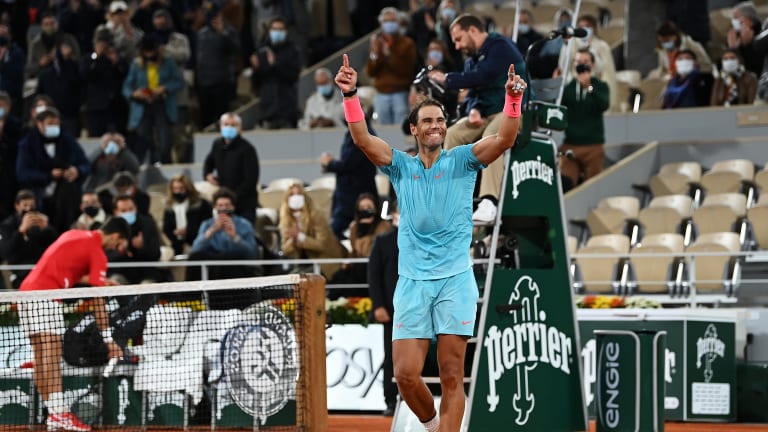
Red Dirt Reset: Answering the clay-court season's biggest questions
© Getty Images
Advertising
Expect Nadal to peak physically and mentally for Roland Garros. (Getty Images)
It’s unlikely that Nadal can reprise the days when he utterly dominated his peers in the spring. But it’s also unlikely that the banged-up 34-year old is bent on doing that. At this stage, Nadal will do whatever he needs to be in optimal shape for Roland Garros.
“Rafa always tuned up with four events: Monte Carlo, Barcelona, Madrid, and Rome,” elite coach and ESPN analyst Brad Gilbert told me. “He didn’t play as well in those in 2019 but then he still went and won the French. It goes to show, until someone beats Rafa at Roland Garros he’s still the best.”
Osaka left the Miami Open, where Maria Sakkari halted her 23-match, hard-court win streak, feeling upbeat about the coming clay segment, even though her best result on the surface as a pro was a semifinal in Stuttgart two years ago.
“Definitely I'd love to win a tournament on clay,” said Osaka. “I think for me, I'm going to learn a lot from Wim [Fissette, Osaka’s coach since the start of the 2020 season]. He's very energetic and excited to move on to the new surfaces.
Fissette and fellow coach Yutaka Nakamura both understand what it takes to win on clay. Fissette has coached four No. 1 players, including clay expert Simona Halep, while Nakamura has previously worked the kinks out of the muscles of Kei Nishikori and Maria Sharapova.
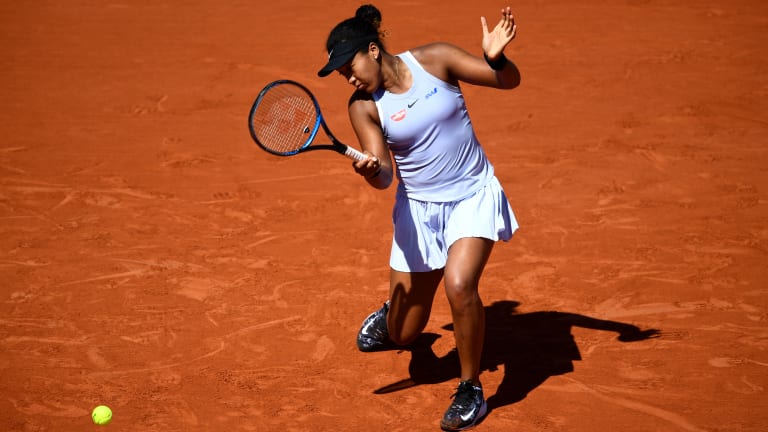
Red Dirt Reset: Answering the clay-court season's biggest questions
© Getty Images
Advertising
Osaka is excited to test her game on the clay this season. (Getty Images)
Take note: If recent WTA history has taught us anything, it’s that experience isn’t all it’s cracked up to be. Ash Barty, the 24-year-old French Open champion from 2019, has won just one other clay event—a 25K sub-tour event way back in 2012. And defending champion Iga Swiatek, just 19, hasn’t won on tour-level on clay either. The highest-ranked player Swiatek defeated in five other lower-level events was ranked No. 203.
This is a complex question. The Monte Carlo Masters 1000 (ATP only) encourages the men to hit the ground running. But while it offers the top total of sub-Slam ranking-points, it is also for acclimatizing to the red clay and European conditions after a strenuous hard-court segment.
The Madrid combined 1000-level tournament is also a choice prize, but because of the altitude the balls fly with more zip than at the other events, it favors more aggressive players. It isn’t as relevant to the ultimate prize, the French Open.
The clay at the Italian Open has a golden tint. It’s different from the rust-colored clay courts in Paris and usually plays a bit faster—thanks in large measure to the customarily sunnier, drier climate in Rome. But with a week off between Rome and Roland Garros, it remains the most significant tune-up tournament.
Top-ranked Novak Djokoic can narrow the Slam title gap that separates him from Nadal and Roger Federer to one (Djokovic has 18), setting up a career-closing race to claim GOAT status. And Serena Williams could equal the all-time Grand Slam singles title record held by Margaret Court (24), but the extent of her participation on the red clay is uncertain.
Things look murky around two-time French Open runner-up Dominic Thiem. The 2020 US Open champion had a rough start this year, exacerbated by a foot injury (his father claims it will not impair him on clay). Yet Thiem opted out of Monte Carlo, then entered Belgrade, a 250 that will take place during the same week as the Barcelona ATP 500.
Thiem ranks second only to Nadal on clay, which makes his scheduling decisions that much more mystifying.
“I'm having tough weeks ahead of me,” he recently said. “I have a lot of work to do.”
And about those familiar, successful Next Gen graduates: Alexander Zverev, Stefanos Tsitsipas and Denis Shapovalov need to watch it or they might be pushed out of the way by rapidly developing contemporaries—or even younger, rising stars. Those include Andrey Rublev, Jannik Sinner, Lorenzo Musetti, Carlos Alcaraz and Sebastian Korda.
“Last year, I said there were 20 women who could win the French Open, and (the champion) Iga Swiatek wasn’t even one of them,” Gilbert said. “We have just as many legitimate contenders these days at every WTA event, and I wouldn’t be surprised if the trend of a different player winning every week continues on the clay.”
That could be disturbing news for familiar names, including Karolina Pliskova, Elina Svitolina, Simona Halep, Sloane Stephens, Petra Kvitova and Victoria Azarenka. Halep is the gold standard among WTA clay-courters. She has nine tour-level titles on clay, including the 2018 French Open. But she’s approaching 30 and has struggled with back and shoulder problems already this year.
It’s easy to overlook No. 4 Sofia Kenin in light of her tepid 7-5 start this year, due partly to recent appendix surgery. But she is the defending Roland Garros runner-up, and the clay is a playing-field leveler for players like Kenin, who makes up for what she lacks in size and power with strategic savvy, patience and great mental strength.
Sebastian Korda, just 20, played seven matches (including qualifying) in his breakthrough at Roland Garros last fall. He’s since backed that up, rising to No. 87 after starting 2020 ranked No. 242. Incredibly, he gets the nod as the top U.S. hope.
John Isner is still the most experienced and successful American man on clay, but the extent of his participation is uncertain. Taylor Fritz, who has replaced Isner as the top-ranked American (at No. 30) has come agonizingly close to a breakthrough and keeps working hard at it. His stablemate Tommy Paul is a former French Open junior champion who has been on the upswing.

Red Dirt Reset: Answering the clay-court season's biggest questions
© Getty Images
Advertising
Clay might be hard-hitting Tommy Paul's best surface. (Getty Images)
Kenin and 2019 semifinalist Amanda Anisimova, who is still just 19, are the top WTA hopes from the U.S., but Jennifer Brady and Jessica Pegula have taken great strides on hard courts, and could challenge the status quo. Coco Gauff, No. 36, keeps improving, but clay in the pros still remains a mystery to the 17-year old former Roland Garros junior champion.
The best-case scenario for Serena fans is that she decides to play the French Open, and enters Rome to get her game tuned.
The biggest unknown is always the weather, which can have an outsized influence on who performs well. The drier and sunnier the conditions, the more they help pros who hit a big ball and/or play aggressively, on or inside the baseline.
That number includes jack-of-all-trades Djokovic, along with many in that logjam of relatively young talent—Medvedev, Tsitsipas, Zverev, Rublev and others. On the WTA side, the main beneficiaries of faster courts will be, among others, Osaka, Bianca Andreescu, Aryna Sabalenka, Petra Kvitova and Karolina Pliskova.
Cool, damp weather will benefit players who are fit and blessed with rock-solid groundstrokes in addition to patience. Nadal would certainly benefit, but wet, cool conditions help all consistent, defense-minded baseliners.
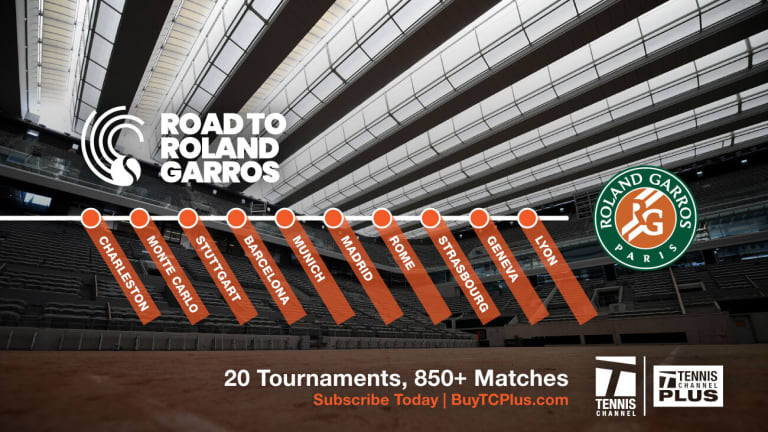
Red Dirt Reset: Answering the clay-court season's biggest questions